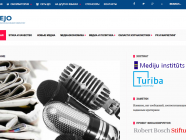EJO Research
 Austria’s political journalists spend 40 percent of their working hours on research.
Austria’s political journalists spend 40 percent of their working hours on research.
But which modes of research do they prefer, and which are valued less? The recently published “Journalists’ Report III” (Journalisten-Report III) provides answers, finding that offline methods such as face-to-face interviews and phone conversations remain preferred modes of information gathering.
The third volume in the series on Austrian journalism published by colleagues Andy Kaltenbrunner, Matthias Karmasin and myself, the report focuses on journalists in the political sector. One hundred of approximately 340 political journalists in Austria were interviewed. Among other issues, the report aimed to discover how new technologies and forms of communication have altered modes of research.
Offline methods still take the lead in importance. Face-to-face conversations with informants and interviewees placed first, closely followed by phone conversations. The Internet is valued as the third most important source of information for Austrian political journalists.
Yet the Internet is large – there are endless varieties of websites and applications. Search engines play a significant role: 97 percent of the interviewed journalists use them daily. Search engines are thereby almost synonymous with Google as 95 percent of participants utilize this particular site. However editorial content is extremely important for research as well: More than two-thirds of political journalists in Austria use news sites from other media companies for daily research.
Significantly less important are other information channels like websites from ministries and governments (used by 27 percent daily, at least once a week by 52 percent). The websites of associations, chambers and special interest groups are used by 14 percent of interviewees daily, and by 46 percent at least once a week. The websites of political parties are used even less frequently (13 percent daily; at least once a week by 35 percent), and websites of politicians are only used by 7 percent daily and 19 percent weekly.
Although the influence of Web 2.0 journalism services such as Twitter and Wikinews have been widely discussed as of late, they are of almost no consequence to Austria’s political journalists. Such services are hardly utilized as sources – apparently today’s journalists prefer face-to-face gossip to gossip via iPhone.
Tags: Andy Kaltenbrunner, Austrian Journalism, Daniela Kraus, Data Gathering Methods, EJO Research, Face-to-Face Interviews, Journalists' Report III, Matthias Karmasin, Offline Research, Political Journalism in Austria












































